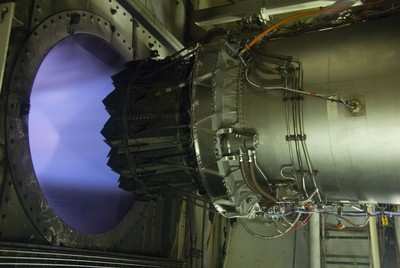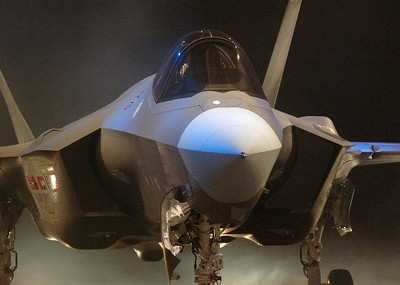First Flight Test Slated For 2010
The GE Rolls-Royce Fighter Engine Team announced Thursday it
successfully completed a high-altitude afterburner testing program
at the US Air Force Arnold Engineering Development Center in
Tennessee, including common exhaust hardware for the F-35 Lightning
II aircraft.

The F136 engine is a 40,000+ lb. thrust, combat engine under
development to power all variants of the F-35 for the US military
and eight partner nations. It is intended to be a second engine
offering for the F-35, competing with the Pratt & Whitney
F135.
All test objectives were reached as planned using an engine
configured with Conventional Takeoff and Landing (CTOL) and Short
Takeoff Vertical Landing (STOVL) common exhaust systems. The engine
configuration included a production-size fan and functional
augmentor allowing several run periods to full afterburner
operation.
A second F136 engine continues testing at a unique GE test
facility in Peebles, Ohio, including both CTOL and STOVL controls
technology test missions. Testing began on schedule at Peebles and
all of the CTOL test objectives were successfully accomplished in
mid-March. STOVL testing will continue over upcoming weeks at the
new GE test facility, which represents a multi-million dollar
investment by the company.
Both the common hardware testing at Arnold Engineering
Development Center and the ongoing Peebles tests mark important
milestones for the F136 program. The two engines were originally
produced during the pre-System Development and Demonstration (SDD)
contract. Since then, the powerplants have been updated with new
fan, augmentor and controls technology designed during the SDD
process.
The pre-SDD engines have totaled more than 600 hours of test
time, contributing significantly to risk reduction in the program.
The first full SDD engine is scheduled to begin testing by early
2009, with first flight in the F-35 to follow in 2010.
The Fighter Engine Team recently completed a successful Critical
Design Review, validating the unique design of the engine. The F136
program remains on schedule and within budget and is fully funded
by the US Government for FY 2008. More than 50 percent of the
System Development and Demonstration funding for the engine has
already been appropriated and the US Government has invested more
than $2 Billion in the program.
"The Fighter Engine Team continues to deliver exceptional
performance and grow confidence in the F136 engine through a
detailed and extensive testing regimen. Based our successful test
results and the recent completion of our Critical Design Review,
we’re on track to begin testing the F136
production-configuration in just a few months," said Jean
Lydon-Rodgers, President of the GE Rolls-Royce Fighter Engine
Team.

"The F136 employs the most advanced, proven technologies, and
the design – which is optimized for the F-35 Lightning II
– will provide affordable growth and lower maintenance costs.
The F136 will benefit the F-35 program with affordable technology
and drive down costs," said Mark Rhodes, Senior Vice President of
the Fighter Engine Team.
The SDD phase is scheduled to run through 2013; the first
production F136 engines are scheduled to be delivered in 2012 for
the F-35 Lightning II aircraft. This occurs during the fourth lot
of F-35 aircraft production, which is very early in the overall
aircraft production program.
 ANN's Daily Aero-Term (06.03.25): No Gyro Approach
ANN's Daily Aero-Term (06.03.25): No Gyro Approach ANN's Daily Aero-Linx (06.03.25)
ANN's Daily Aero-Linx (06.03.25) ANN FAQ: Turn On Post Notifications
ANN FAQ: Turn On Post Notifications Airborne 05.30.25: Anti-Helicopter Bill, PW Strike Done, All-Electric Bristell
Airborne 05.30.25: Anti-Helicopter Bill, PW Strike Done, All-Electric Bristell Airborne 05.29.25: ATC Bonu$, VX4 eVTOL Flies, Starship 9 Test
Airborne 05.29.25: ATC Bonu$, VX4 eVTOL Flies, Starship 9 Test




